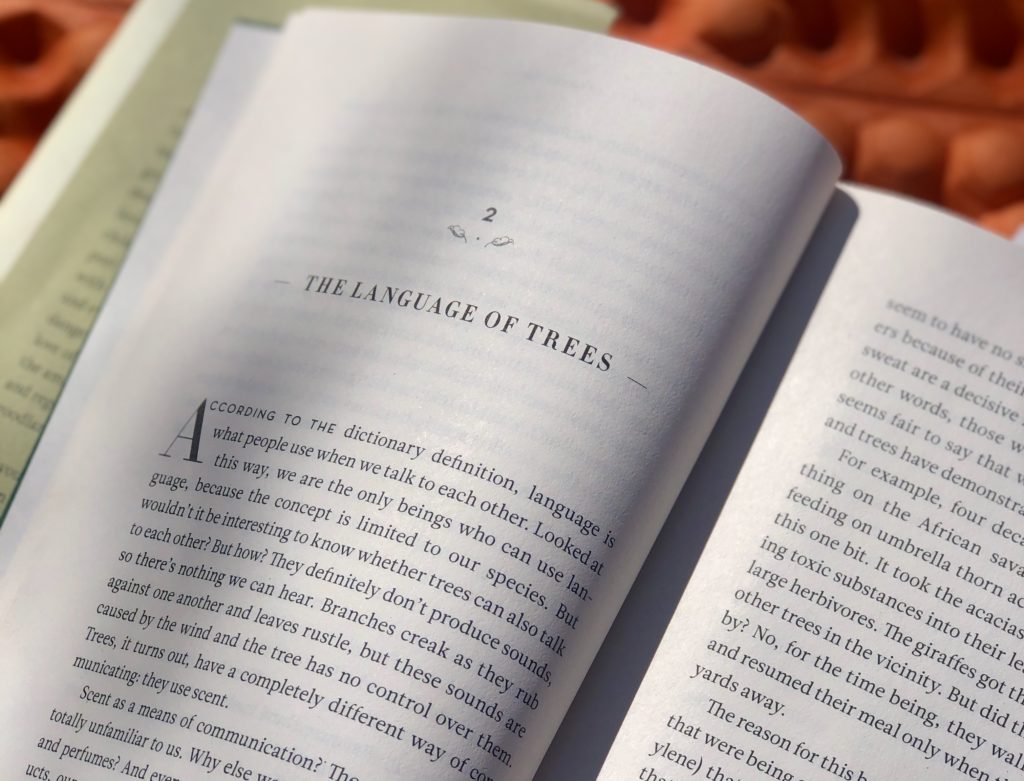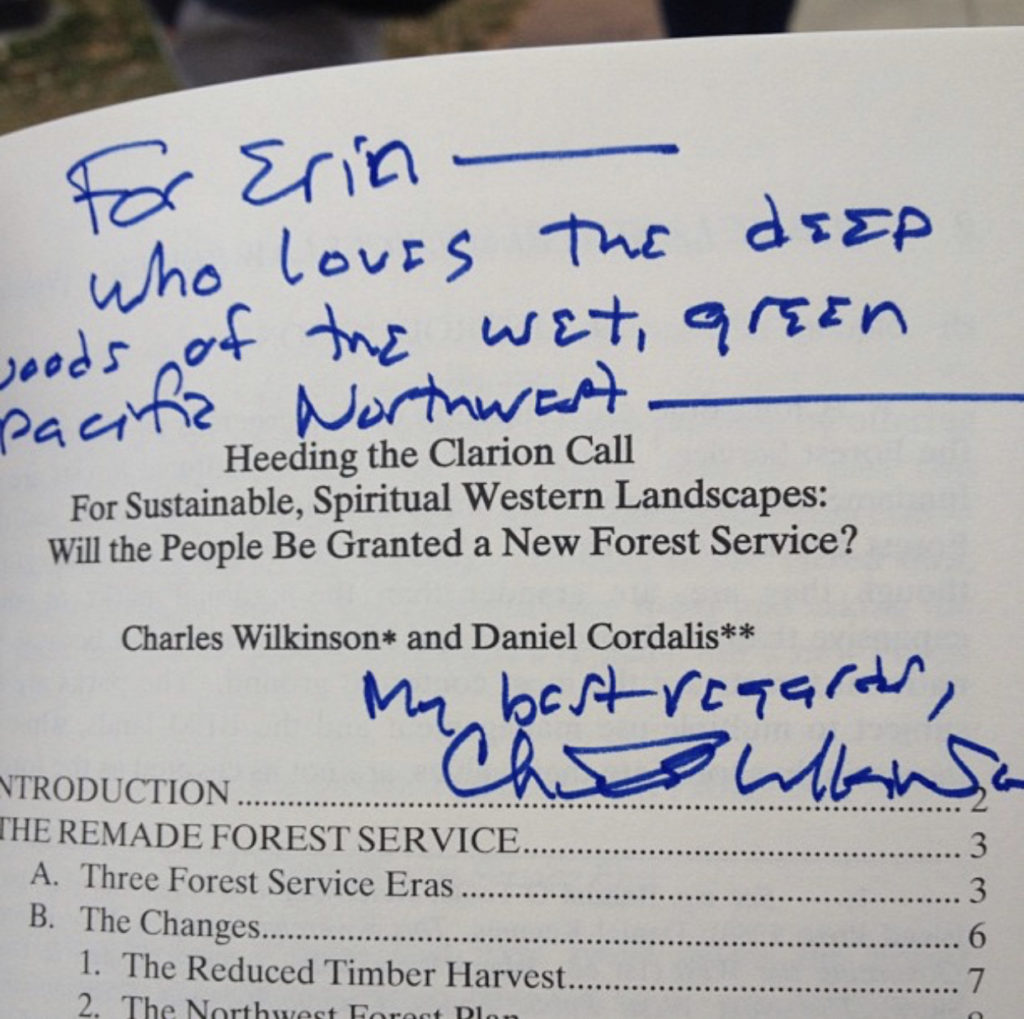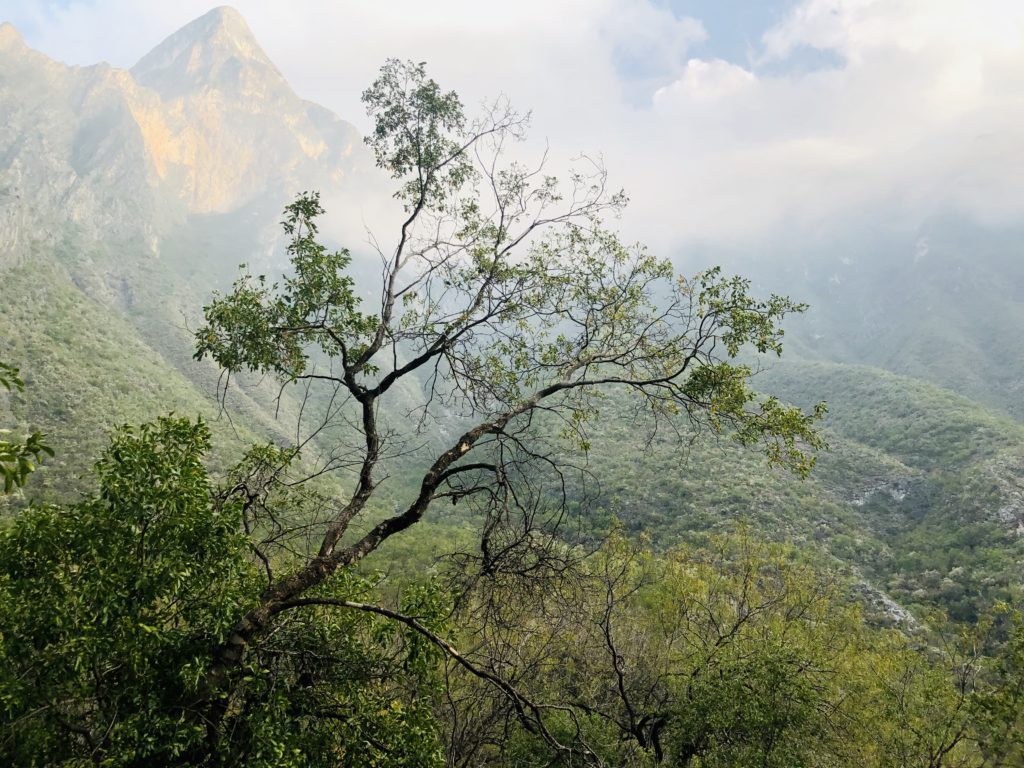The Hidden Life of Trees by Peter Wohlleben is packed with fascinating discoveries from the forest world. Wohlleben is a German forest manager and ecologist who studies how trees communicate, form relationships, and how they thrive. I got this via a book trade with fellow travelers we met while we were in Mexico this winter and I almost gave up on it a few times, but am glad I committed to giving it a close read. I determined to finish it because…
1. Michal finished it and I can’t let Michal finish my book without finishing it myself.
2. I’m genuinely interested in the subject – I really do want to know more about the hidden lives of trees!
3. I support Wohlleben’s mission of “breaking down the moral barriers between animals and plants,” working for the return of primeval forests and saving more trees by helping people like me gain a more intimate understanding of them. Trees are social beings of vast importance to all life on this planet.

Forests aren’t simply collections of trees. They’re complex systems with hubs and networks that overlap and connect. This allows them to communicate, provide feedback and adapt. It’s what makes the forest resilient.
– Suzanne Simard
Why I Loved The Hidden Life of Trees
This book taught me so much about the interdependence of forest life, its puzzles and daily dramas. Indeed, a walk in the woods hasn’t been the same since I finished it. Now I notice places where a tree trunk’s bark is missing due to either fungus or animals rubbing away on them. I notice where humans have lopped off their branches. I notice which different kinds of trees and plants like to grow up near one another. And I notice how many other life forms trees support. Fungus, insects, birds, mammals, all rely on trees – alive or dead – for their various needs. Trees are the “mother ships of biodiversity.”
With that in mind, here are a few more memorable takeaways from The Hidden Life of Trees:
1. Tree Parents Deliberately Deprive Their Young Of Light
Mature tree mothers “shade their offspring with their enormous crowns, creating a thick canopy over the forest floor, which lets only 3 percent of available sunlight reach the ground.” Why is this?
Wohlleben argues that people drastically underestimate the capacity of trees to live for a long time. Loggers harvest trees when they are 80-120 years old, but trees can live for hundreds, even thousands of years. I can’t help but be reminded that we kill cattle prematurely, too. Cows naturally can live for 15-22 years, but are typically sent to slaughter at just 18 months. But I digress.
The reason tree parents deprive their offspring of light is so they grow slower. The slower they grow, the longer they live.
2. The Slow Lives of Trees
When trees grow slowly, “their inner woody cells stay tiny so they contain little air, which makes them flexible and resistant to breaking in storms. It also makes them resistant to fungi…” Another interesting fact is that the older trees are, the faster they grow. In the case of trees, being “elderly” doesn’t equate to frailty. “Quite the opposite. [Being elderly] means being highly productive and full of energy.”
Another advantage of trees growing old is that older trees fertilize the forest. Old trees on the West Coast of Canada gathered large quantities of moss on their branches, which blue-green algae then colonized. “These algae then capture nitrogen from the air and process it into a for the trees can use. Rain then washes this natural fertilizer down the trunks, making it available to the roots. Thus, old trees fertilize the forest and help their offspring get a better start in life.”
You can see the disadvantages of young trees growing up without their parents most apparently in urban settings. Planted alone, the young trees don’t have the thick canopy above them depriving them of light, so they binge on “sugary treats because they can photosynthesize as much as they want in the full sun.” Unfortunately, this leads to the trees growing much faster than they normally would, and their wood becomes full of air pockets. Fungi then “have a field day,” which leads to inner rot, and eventually premature death.
3. Damage Above Ground Can Cause Damage Below Ground
Tree roots grow to a size below ground that more or less matches the tree above ground. Photosynthesis drops off when a large part of the tree is pruned to keep it from growing into the street, power lines, or your house. Trees use photosynthesis to feed their roots, so when there’s less tree available above ground to photosynthesize, the root system becomes malnourished and can’t optimally perform its duties. And usually this is when a tree needs its roots more than ever. When a tree has its branches hacked off by pruning, the damaged area becomes a prime spot for fungi to move in. Compromising the root system deprives the trees of key nutrients, leaving it to die faster.
4. Old Trees And New Trees Are Very Different Creatures
Planting trees is a rallying cry for “saving the planet” that seems to unite people of all ages and backgrounds. I’m not saying that we should quit our attempts to reduce the detrimental effects of deforestation by planting new trees. What I am saying is that new trees are unlike their older brethren. If we could achieve the same kind of nearly unanimous buy-in for preserving old trees that we’ve achieved for planting new trees, the planet would be in a much better position. See, when one preserves an old tree in an ancient forest, they are preserving not just existing trees, shrubs, plants, grasses and soil, they are also preserving the entire process that occured which resulted in the abundant biodiversity of the forest. This is called process conservation. Human processes, like planting new trees to make up for felling old trees, are inferior to the forest’s natural process.
From the abundance of micronutrients found in ancient forest soil, to the intelligent underground mycelial systems that help trees communicate with each other, to old-growth trees superior ability to capture CO2, new tree “plantations” – perhaps a more precise term for what we call many “forests” these days – can’t beat ancient forests. According to Jonathan Jelen of the nonprofit Oregon Wild, “these areas provide some of the cleanest drinking water in the world, critical fish and wildlife habitat, world-class recreational opportunities and critical carbon storage in our fight against global warming.” (Scientific American)
While some European organizations are focused on restoring their landscapes now back to their natural state, “the European landscape is the result of millennia of human activities.” Only a small fraction of European forests are still substantially undisturbed, and there is much to be done.

I’ve written before about letting nature’s intelligence reign supreme over human innovation. Humans planting trees is nice, but humans can’t plant and grow trees like nature can. If a company wants to make a positive contribution, try researching how to preserve a portion of old-growth forest. A community in Hümmel, Germany has planned innovative ways to market old-growth forests while preserving them. “Firms can lease part of the preserve as their contribution to protecting the environment.”
5. Today’s Coal Comes from Trees That Died 300 Million Years Ago
This discovery from Wohlleben’s book amazed me! 300 million years ago, trees mostly grew in swamps. When they died, they decomposed in standing water, which kept them from rotting. Thousands of years later, “they turned into thick layers of peat that were then overlain with rocky debris. Pressure gradually turned peat into coal.” Today, hardly any fossil fuels like coal are being regenerated. We’ve been greatly interrupting this process since the Roman Empire.
In Conclusion…
From understanding mast years, to how trees communicate danger to one another by giving off scent, to understanding the tree “welfare system,” there’s so many more insightful tidbits between the pages of Wohlleben’s book. Ecologist Suzanne Simard wrote the epilogue to Wohlleben’s book. Her concept of the “wood wide web” is another intriguing part of his book. Here she is talking about it:
I encourage you to give this book a read. The more we come to understand trees and the natural world, the more inclined we’ll be to conserve it.

